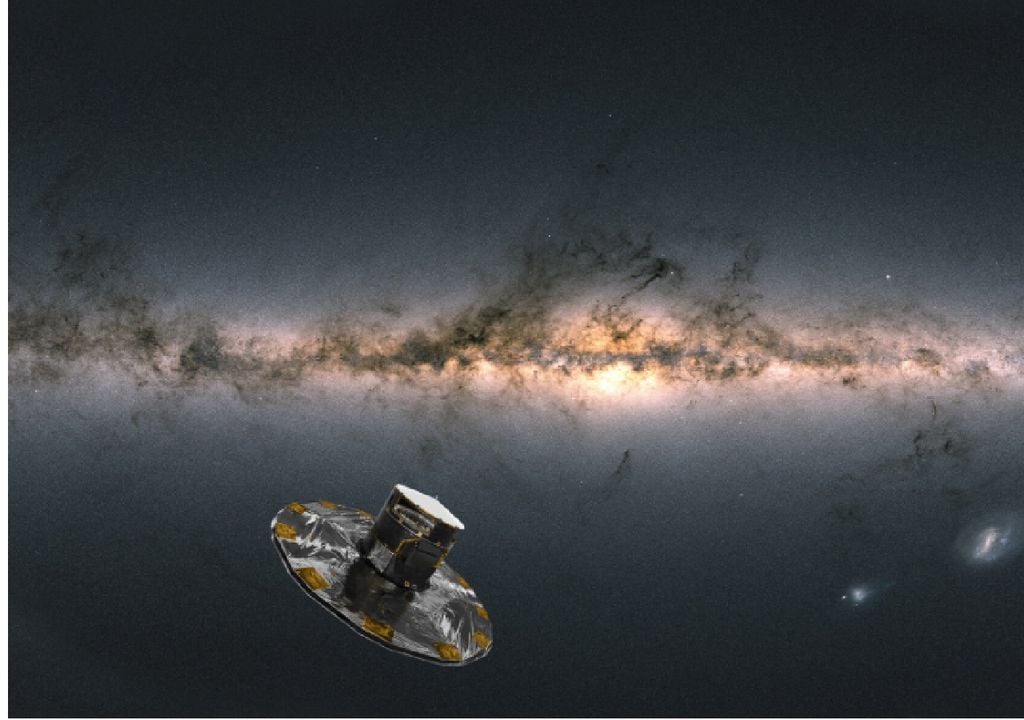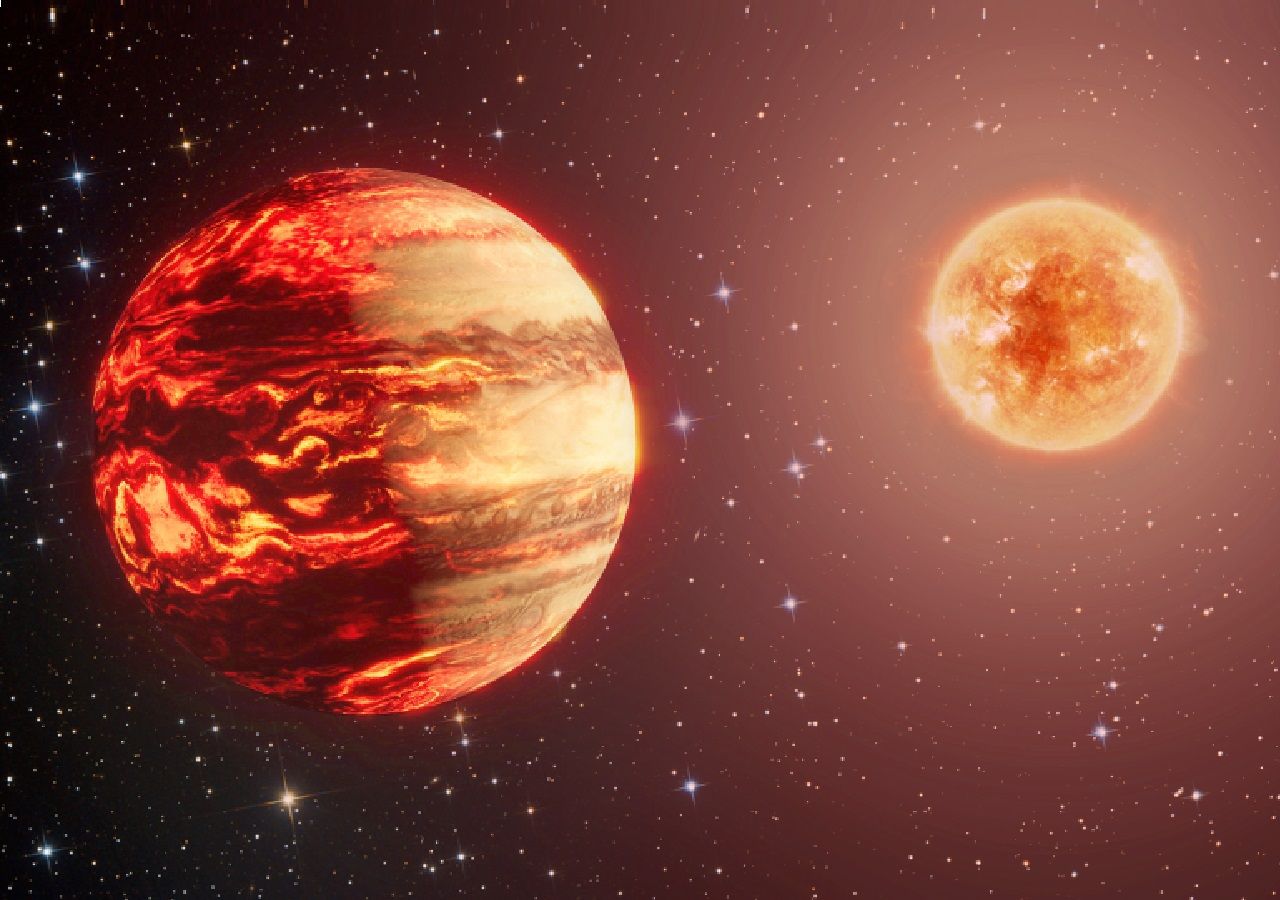Surely you have ever tried to take a photo of some dim light object, but when you were close to a brighter light source (for example, a lighthouse), your photo was a complete failure as you could only see one bright glow. Exactly this is it The same A problem that astronomers face while chasing small, faint stars or planets Next to a bright star.
To address this problem, an international team of astronomers led by Thomas Winterhalder, a scientist at the European Southern Observatory (ESO), began looking into Catalogue prepared by Gaia (ESA's space telescope)), which It collects hundreds of thousands of stars suspected of having a companion.
Although the companion objects are not bright enough to be seen directly by Gaia, their presence causes small oscillations in the paths of the brighter host stars, which only Gaia can measure.
By combining data from the European Space Agency's Gaia space telescope with the European Southern Observatory's GRAVITY instrument on Earth, scientists were able to capture this image. The first light signals from the dark companions of eight hitherto unseen luminous stars, according to publications by the European Space Agency.
This is the result of the powerful European telescope Gaia, dedicated to making the most accurate star map of the Milky Way.
Here's a map of the 40,000 stars in a 326 light-year radius centered in our solar system.
This is how they will move for the next twenty thousand years. pic.twitter.com/AdKahpNpdZ
— Napoleon Cornejo (@napocornejo) December 6, 2020
Interferometry technique
In the Gaia catalog of stellar orbits, the team identified eight stars to target GRAVITY, advanced near-infrared interferometer From the European Southern Observatory's Very Large Telescope, Cerro Paranal, Chile. gravity It collects infrared light from different telescopes to capture fine details in faint objectsYesin a technique called interferometry.
This technique is promising, because it opens up the tantalizing possibility of capturing images of planets orbiting close to their host stars.
“We have shown that it is possible to capture an image of a faint companion, even when it orbits close to its bright host,” Thomas explains. “This achievement highlights Remarkable synergy between Gaia and GRAVITY. Just Gaia can recognize systems this small. which harbors a star and a “hidden” companion. After, Gravity can control the imaging of the smallest and weakest objects. With unprecedented accuracy.
Hidden Star Owners
Thanks to GRAVITY's exceptionally sharp and sensitive eye, the team picked up the blip of the eight comrades, seven of whom were previously unknown. Three of the companions are very young and faint stars, while the other five are brown dwarfs. It's about Celestial bodies located between planets and stars: More massive than the heaviest planets, but lighter and fainter than the lightest stars.

One of the brown dwarfs discovered in this study orbits its host star at the same distance that Earth is from the Sun This is the first time a brown dwarf has been captured directly close to its host star.
Small companions inferred from observations of Gaia are usually found in Small separation angles of a few tens of milliseconds of arc.About the size of a single euro coin, it can be seen from 100 kilometers away.
“In our observations, Gaia’s data acts as a kind of reference,” Thomas continues. “The portion of the sky we can see with GRAVITY is very small, so we need to know where to look. It’s unparalleled and Accurate measurements for Gaia The movements and positions of the stars are essential. To point our gravity instrument in the right direction in the sky.
Together, Gaia and GRAVITY make a great team.
Integration between Gaia and gravity It goes beyond using Gaia data to plan follow-up observations and enable discoveries. Combining two sets of data, Scientists were able to “weigh” individual celestial bodies separately And distinguish between the mass of the host star and the mass of its companion.

GRAVITY also measured the contrast between the companion star and the host star. At a variety of wavelengths in the infrared. Combined with collective estimates, this knowledge It allowed the team to assess the ages of its teammates. Surprisingly, two brown dwarfs turned out to be less luminous than expected given their size and age. A possible explanation for this could be that the dwarves themselves had a smaller companion.
Search for exoplanets
In a previous study, Astronomers used data from Gaia and various ground-based observatories to capture a picture of a gas giant exoplanet. The planet orbits its host star at about 17 times Earth's distance from the Sun, tracing an angle across the sky much wider than the typical separation of companion moons imaged by GRAVITY in this new result.
But with this latest discovery, having demonstrated the power of the Gaia-GRAVITY cluster, scientists now hope to track down potential companion planets to the stars included in the Gaia catalogue.
“The ability to detect small movements of close pairs in the sky is a unique feature of the Gaia mission. The next catalogue, which will be available as part of the fourth data release (DR4), will contain a richer collection of stars with Smaller potential escorts.” Which. “This result opens new paths in the search for planets in our galaxy, and promises to give us a glimpse of new distant worlds.”
News Reference:
Combining Gaia and Gravity: Description of Five New Directly Discovered Substellar Companions It was published in Astronomy and Astrophysics . doi: 10.1051/0004-6361/202450018.





:quality(85)//cloudfront-us-east-1.images.arcpublishing.com/infobae/M7IDT3UTUOONRV3SDGUBWOZNF4.jpg)